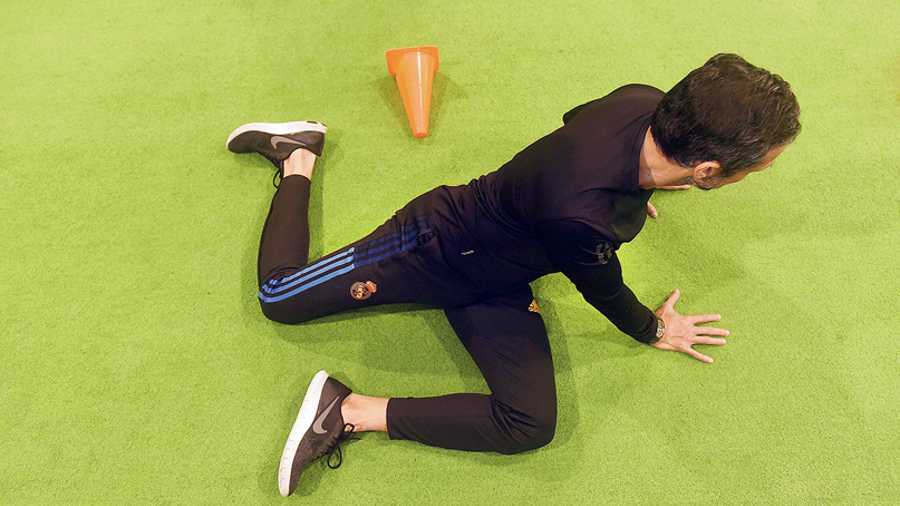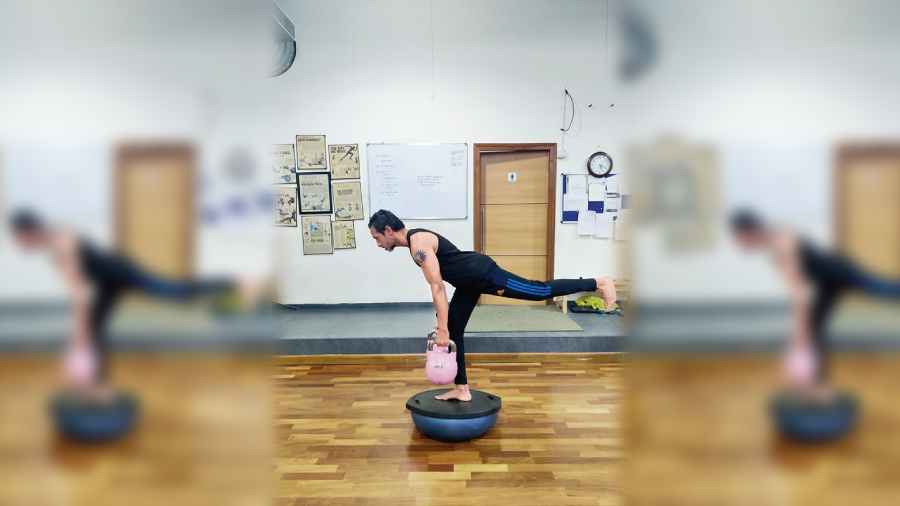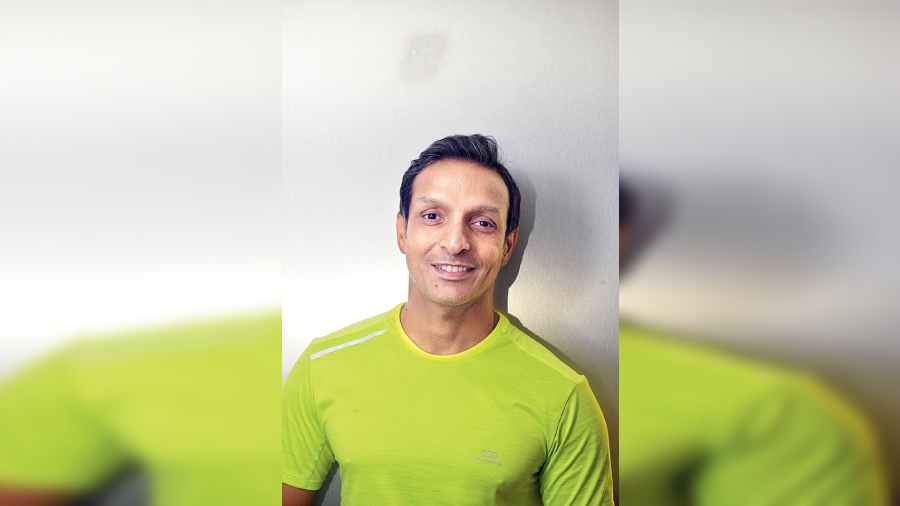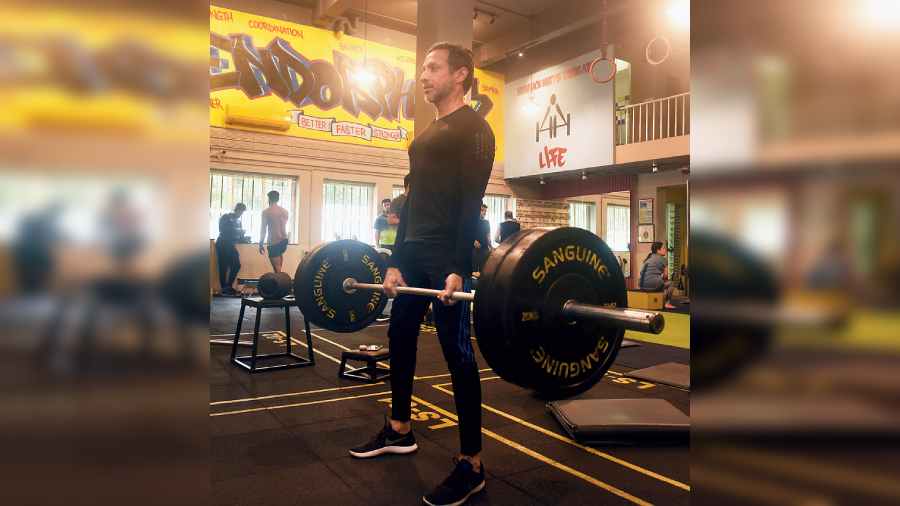We have all heard this before, almost like a cliche: “In order to improve your health, you must work out more.” More so now with the pandemic exposing our vulnerabilities with health and wellness. A large section of the population believes that the magic bullet to health, performance, longevity and transforming your physique is to work out really hard and deprive yourself of anything that tastes remotely delicious. I am often asked by people from all walks of life about how long I punish myself in the gym and whether I eat “normal” food. I see their jaws drop when they find me enjoying a dessert or sipping my favourite wine in a restaurant.
I have written this earlier and even at the risk of sounding repetitive, let’s revisit this phenomenon again: Never before have we had so many gyms, fitness centres, spas, yoga clinics and other wellness options flooding our urban life space. Never in the past have so many people earned a livelihood teaching and practising some sort of physical fitness methodology. Despite all this, never have we been so unhealthy and ridden with so many ailments. Yet, many scientific research papers have clearly recognised the role of exercising in building a robust and resilient immune system and preventing lifestyle diseases. Does this sound paradoxical and contradictory? Not really.
Of course, good movement culture is essential to robust health and vitality. But if it were that easy, we wouldn’t be seeing the atrocious obesity and other preventable lifestyle and musculoskeletal diseases that have stricken today’s society. This simple idea that burning more calories by any means and any method and that forcing yourself into a highly restrictive and unhealthy “fad” diet is the way to good health and well-being is the bane of today’s mainstream fitness industry and completely baseless.
There are countless dubious practitioners and their followers propagating a methodology as “successful” only because it has achieved a superficial cosmetic transformation. People are pounding their knees (not to speak of their hearts) on the roads with poor running techniques, hurling around weights with faulty biomechanics, grabbing on to any fitness regimen that promise them the quickest weight loss or biggest muscle mass and shoving every possible kind of performance-enhancing pharmaceutical products into their bodies all in the quest for that perfect body. And then comes a health epidemic and they realise how fragile their bastions of protection are.
Yet, it is true and will always be true that the only time-tested way to build health and extend longevity is to improve lifestyle and skill set around training and nutrition. These values will serve you for a lifetime. Just “working out” is hurting you and costing you your health. Here is the sensible solution.

Hypertrophy — growth in the size of muscle cells primarily caused by resistance training. Pictures: Pabitra Das
Working out is not the same as training
A core ingredient and a salient feature of effective exercise culture is incorporating a paradigm shift in the mindset from “no pain, no gain” mentality to a higher awareness working on removing the dysfunctions of the body as well as setting overall health and fitness goals.
I am going to go on and explain why you need to train more and work out less. Training is as different from working out as studying is from reading. Reading is random and can be varied whereas studying is accumulation of knowledge in a single or multiple domains over an extended period of time. One of the reasons why training results in long-term improvement is that it properly assesses the current state of the subject and logically plans for improvement in a way that is safe, specific and sustainable and therefore productive. But, first understanding of a few concepts may be in place. Legendary coach Mark Rippetoe describes exercise (or workout) as “physical activity for its own sake while training is physical activity done with a long-term goal in mind, the constituent workouts of which are specifically designed to produce that goal”.
According to Lawrence Lee — CSCS, master trainer, functional movement and pain-free performance specialist — training is “designed to elicit a specific physiological or neurological adaptation that is in line with individual goals and limitations (speed, strength, balance, injury rehabilitation, and so on)”.
Working out can be described “as a bout of exercise, with the ultimate purpose of burning calories and exertion (burpees, Zumba, CrossFit)”.
Physical activity can be defined as any bodily movement produced by skeletal muscles that requires energy expenditure (walking, gardening, chopping wood, sports and so on).
Many people play recreational sports and consider it to be equal to training. Does it not surprise them that top-notch sports professional athletes spend hours shaping and training their bodies in addition to the time spent in improving sports skills?
To be truly healthy and robust, you have to understand the reason why you need to train more, work out less and remain active. You could make an educated decision if you need to make some changes to your routine to produce a better outcome that will be in line with your goals, lifestyle and values.
A corrective exercise specialist will perform an assessment and evaluation before starting an exercise programme with you. He or she will review health history, discuss exercise experience, conduct movement assessments, evaluate current lifestyle habits (sleep, stress management) and eventually set goals for the programme using the SMART model (specific, measurable, attainable, realistic and timely goals). This is an extremely vital and non-negotiable part of the training process. According to Spandan Dutta, CSCS, FMS practitioner and corrective exercise coach at Endorphins: “I always use a movement screen to assess and study movement patterns in a new client. A screen will throw up and lay bare muscle imbalances, reduced flexibility, poor core strength and deficits in neural control and proprioception that will ultimately manifest itself in future pain and disability”.
Random and wishy-washy training will produce superficial changes that will not stand up in the face of contingencies. An injury is a contingency; sudden onset of an acute disease is a contingency; an accident is a contingency. Your body should be built up as a fortress to stand up and protect you from all contingencies that have the potential to cause harm to it.

All three metabolic pathways or energy systems need to be trained
A clinically planned training programme matters
According to Lawrence Lee, an intelligent training programme will factor in all areas of fitness: mobility (joint and muscle restrictions), VO2 max, resting heart rate, stability, proprioception, hypertrophy, balance, coordination, strength, power and muscular endurance. A good conditioning coach is one who can take all these measurable qualities and turn them into performance. Everybody’s idea of performance will of course differ — ranging from the ability to improve your score on the sports field to being able to go cycling with your grandkids.
Each of these areas mentioned above will need specific stimulus or load to be put on the body to bring about the desired changes or adaptations. For example, if your goal is to improve bone density, you have to load your hips and spine with weight that is equal to at least one-tenth of the force that will cause a bone fracture. Using less poundage may bring about other positive adaptations but it will not improve bone density. Let’s look at another case: Losing belly fat will necessitate that the exerciser train at at least 80 per cent of his/her max heart rate. At lower heart rates, you may build up cardiovascular endurance but will not achieve much in losing that pooch below the umbilicus.
Hence the said principle: Specific Adaptation to Imposed Demands. Simply put, your body will adapt to positive stress. However, if the training prescription and stimuli are faulty, then, the body will adapt negatively. This is what as fitness coaches we have to help you avoid and our job is to educate you to achieve the opposite positive adaptations. This explains why despite so many people being on some sort of an exercise programme, musculoskeletal and metabolic illnesses are rampant in our society. Too many of them are on random exercise programmes based on “bro-science” that merely appeal to the trainee’s sense of vanity and feed an exercise-junkie mentality, fuelled and driven by poorly educated professionals.
How the body adapts to training stimulus
Many years ago, Dr Hans Selye, a famous Canadian endocrinologist described how the body adapts to positive stress…
Alarm stage: The body receives a shock as homeostasis is disrupted (this is the training session). There is a change in blood pressure, ventilation rate, heart rate, blood sugar etc. During this stage, the body’s sympathetic nervous system is aroused to react to the stressors produced by the onset of exercise.
Resistance stage: The body tries to repair itself after the initial shock of stress and go back to normal functioning levels. The stressful situations (exercise sessions) have to be expertly monitored otherwise the disturbances caused by the ‘Alarm’ stage will continue and recovery will be adversely affected.
Adaptation stage: Desirable changes take place in the body both at a metabolic as well as musculoskeletal level that are beneficial to overall health, quality of life and general wellness. At this stage, the body has completed all the positive changes that were part of the initial goal and objective of beginning the programme in the first place.
Five pillars of health and longevity
Mobility

Mobility: The ability of a joint to achieve full range of movement and not be limited by connective tissue or fascia is imperative for optimal functioning of your body
The ability of a joint to achieve full range of movement and not be limited by connective tissue or fascia is imperative for optimal functioning of your body. Merely “being active” and doing “random workouts” do not ensure that every joint in your body is achieving full range of motion. I look at range of motion as nourishment for the body. A joint that is restricted in its movement will ultimately cause problems and dysfunctions along the kinetic chain including in a distal or proximal joint. Many popular modes of recreational activity like running, swimming and cycling do not achieve full range of movement around all joints of the body. Yet, they are widely recognised as “complete” modes of exercise.
Metabolic competence
The main molecule in your body that actually is the currency for energy is called ATP (Adenosine Triphosphate). Without ATP, our bodies cannot carry out any function including blinking your eyelids. The body produces ATP through three different energy systems: The Creatinephosphate system, the Anaerobic Glycolysis system and the Aerobic (Oxidative) system. All three pathways need to be trained and the training protocols or parameters are different for each pathway. The benefits of training all energy systems include but are not limited to improved VO2 max (linked to living longer), improved resting heart rate, improved lung capacity, improved local muscular endurance, improved immune system, improved response to daily stress including training in the gym.
Proprioception

Proprioception: This refers to your kinesthetic awareness or sense of where you are in space
This refers to your kinesthetic awareness or sense of where you are in space. Proprioceptive training necessitates including exercises that challenge your sense of balance and stability in the exercise programme. Training your nervous system (brain) and learning how to establish a grounded base of support with a proper foot position, knee alignment, hip engagement, and a stable trunk is important in all aspects of health and fitness and will have a huge carry-over benefit into activities of daily life that might not have accrued with a typical “workout” plan.
Hypertrophy
Growth in the size of muscle cells primarily caused by resistance training includes benefits that extend to injury prevention, increased energy usage (both during rest as well as training), enhanced insulin sensitivity and improved physical appearance.
Strength
“Strength is the mother of all qualities,” says Tudor Bompa, the father of periodisation. “Be what you choose to be, but be strong first,” says professor Leonid Matveev, one of the foremost Russian sports scientists. Strength can actually be broken down into several categories (maximal strength, explosive strength, speed strength, strength speed, starting strength, relative strength, and strength endurance). There are various benefits of increasing strength, including the following: increased bone density, increase in muscle building hormones, improved intramuscular coordination, improved resiliency of muscle and connective tissue, improved aerobic capacity of working muscles (mitochondria health), improved postural endurance, and increased rate of force production (athletic performance).
Measurable training
Training should improve overall health (yes, even your resistance to viruses) movement quality, and activities of daily living. If you are currently feeling let down by your present exercise or activity routine or if you are falling short of your expectations and goals with your current fitness regimen, you probably aren’t training and rather spending too much time “working out” or using the excuse that you are “active” when in reality you are not. This doesn’t cut it, especially if you value your health and quality of life. “Working out” or “being active” is great particularly in a group or community setting — it’s a lot of fun, you may sweat gallons and it may well be very challenging. But don’t confuse it with being effective, specific and sustainable.

Ranadeep Moitra is a strength and conditioning specialist and corrective exercise coach
